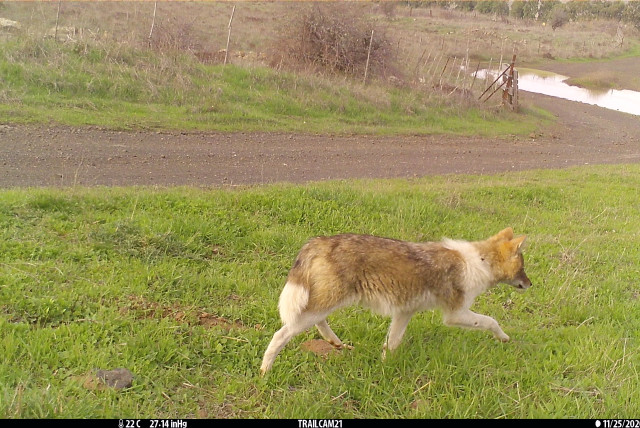Israeli jackals in Golan Heights show signs of domestication, study finds

Jackals may be in the process of domestication after long-term exposure to humans in the Golan Heights.
Jackals culled in the Golan Heights were found to have signs of domestication according to new research from the Shamir Research Institute published in May.
The peer-reviewed study was attempting to discover if golden jackals have begun displaying genetic signs of domestication due to a natural adaption or if the differences are due to genetic intermixing with dogs.
The research was carried out by PhD student Ayelet Barash from the School of Zoology at Tel Aviv University, under the guidance of Dr. Yaron Dekel, Scientific Director at the Shamir Institute for Research and the University of Haifa and Professor Tamar Dayan, Chair of the Steinhardt Museum of Natural History and Tel Aviv University.
Some signs of domestication include coat color changes, drooping ears, leg shortening, loss of periodic hair shedding, overall smaller size, and like in dogs, an upturned tail.
Another sign of domestication is white patches on a brown/grey chest, which was termed the "star gene", and was also documented in the fox domestication experiment carried out in Novosibirsk over 60 years ago.
It is still unclear whether coat variation is the result of human selection for tameness, or if it is a result of a causal genetic mutation due to it making the animal less scary to humans. Whatever the reason for these variations in color, this is assumed to be the first trait that appeared in domesticated mammals.
At the center of the study is a golden jackal, nicknamed "Jackie" by researchers. Jackie was culled in the Golan Heights and was found with distinctive white coloration on her chest and legs. Researchers were curious as to Jackie's family history so decided to administer genetic tests to ascertain her genetic lineage.
They found that from her paternal side, she is a golden jackal, but her maternal mitochondrial DNA showed evidence of historical African wolf introgression. However, this does not explain her unique coat color nor her resemblance to a domesticated dog.
Three possible explanations for Jackie's coloration
The researchers put forward three possible scenarios explaining the unique coloration of Jackie. The first, says that the coloration is still due to intermixing with domesticated dogs, specifically sheep dogs which roam freely in the Golan Heights, the caveat being that it has been an ongoing process such that any direct genetic evidence has been obscured by later jackal DNA.
The second scenario is that these changes are new adaptions by jackals that superficially resemble dog mutations but are caused independently. The researchers say that such an adaption would help to camouflage jackals among populations of domesticated dogs helping them hide from human threats. This would have been caused by a single jackal with the adaption spreading the adaption to its offspring. Researchers were unable to confirm or reject the scenario because of insufficient research on the jackal DNA in question.
The third scenario, which does not contradict either of the previous two, says that the adaptions are due to jackal self-domestication caused by a population explosion. The population explosion has led to jackals seeking food in human settlements by opportunistically exploiting human waste, similar to theories of how ancient dogs were domesticated. This could lead to both of the previous scenarios, both providing the stimulus for domestication and the closeness to domesticated dogs needed for genetic introgression.
The golden jackal population explosion comes after nearly being wiped out in the 1960s as part of an eradication program intended to control rabies.
The jackal population density increased to 2.5 by the end of the 1980s and to 12–24 by the 2010s individuals per km, the golden jackal is now so numerous that it is considered an overabundant species. Meaning they must be carefully monitored and actively managed since they can cause extensive damage in agriculture, to both animal and crop production.
The jackals used in the study were killed as part of the Israel Nature and Parks Authority (INPA) culling program carried out in herd zones.
Jerusalem Post Store
`; document.getElementById("linkPremium").innerHTML = cont; var divWithLink = document.getElementById("premium-link"); if (divWithLink !== null && divWithLink !== 'undefined') { divWithLink.style.border = "solid 1px #cb0f3e"; divWithLink.style.textAlign = "center"; divWithLink.style.marginBottom = "15px"; divWithLink.style.marginTop = "15px"; divWithLink.style.width = "100%"; divWithLink.style.backgroundColor = "#122952"; divWithLink.style.color = "#ffffff"; divWithLink.style.lineHeight = "1.5"; } } (function (v, i) { });

